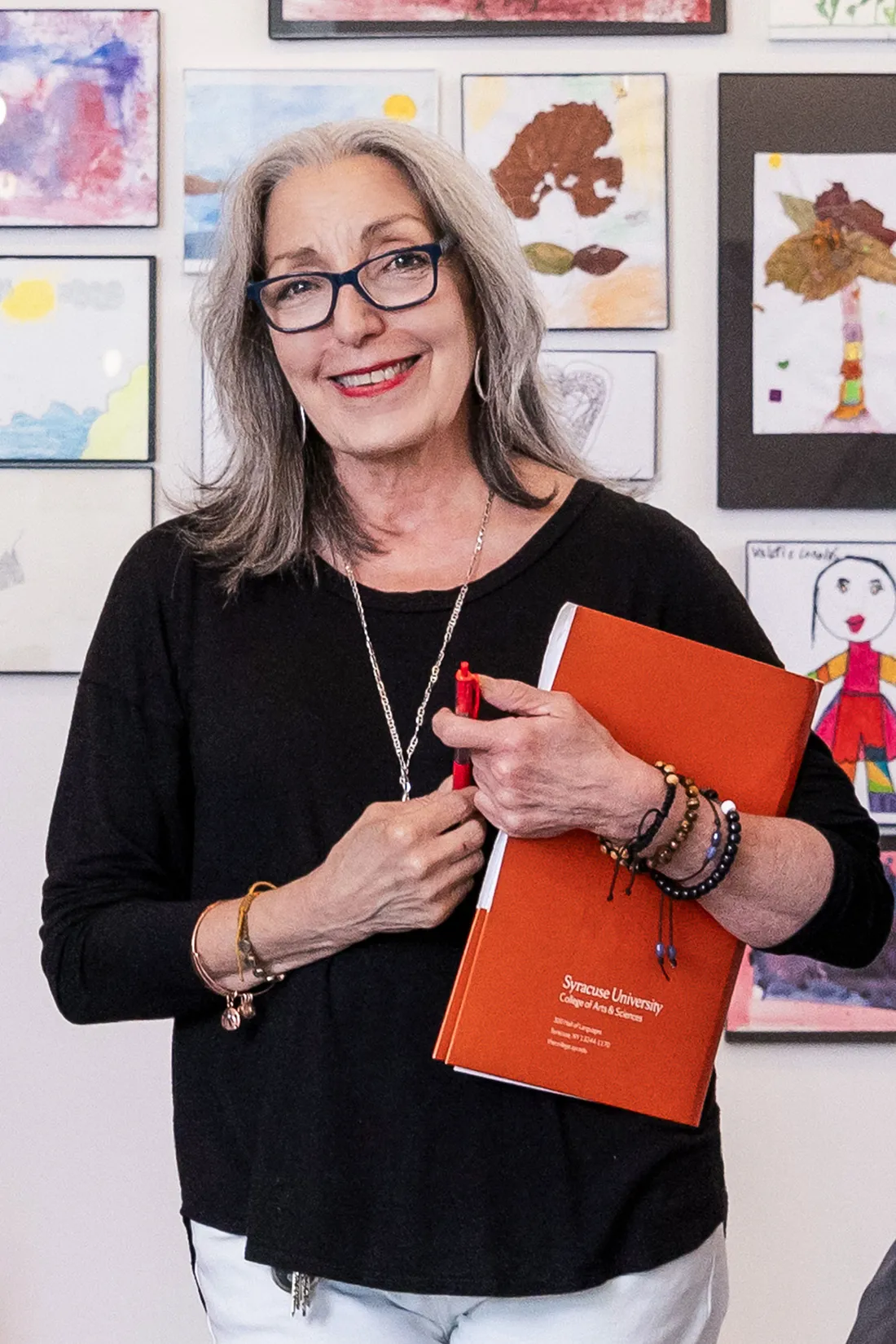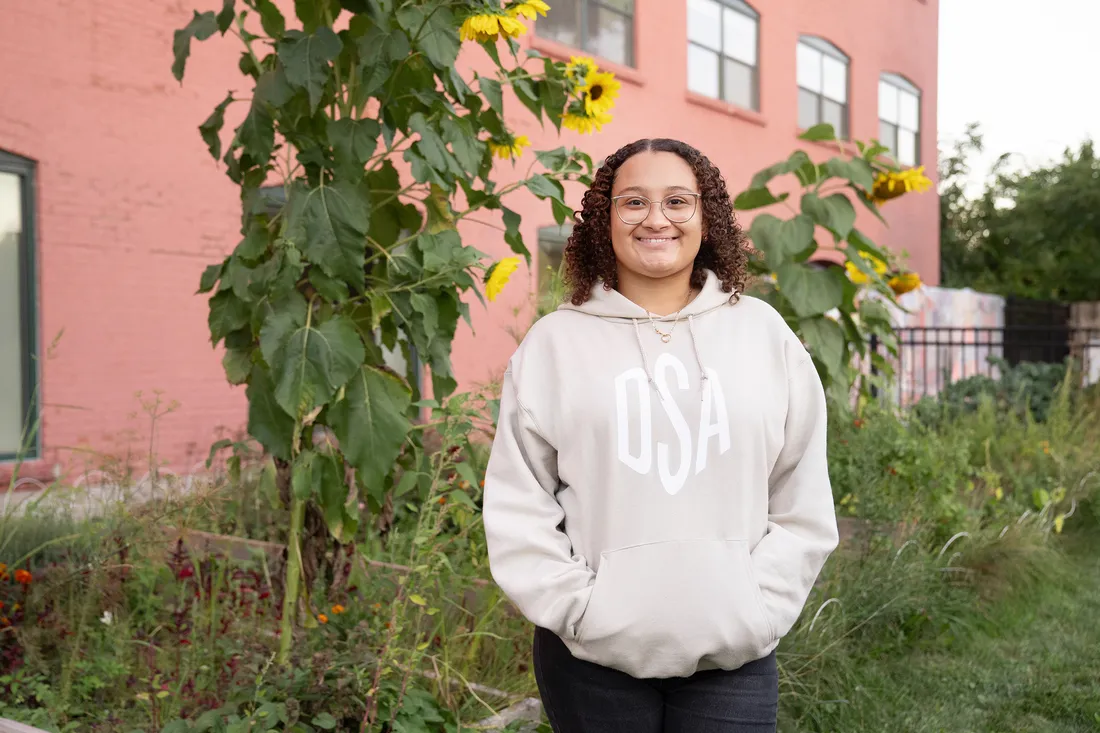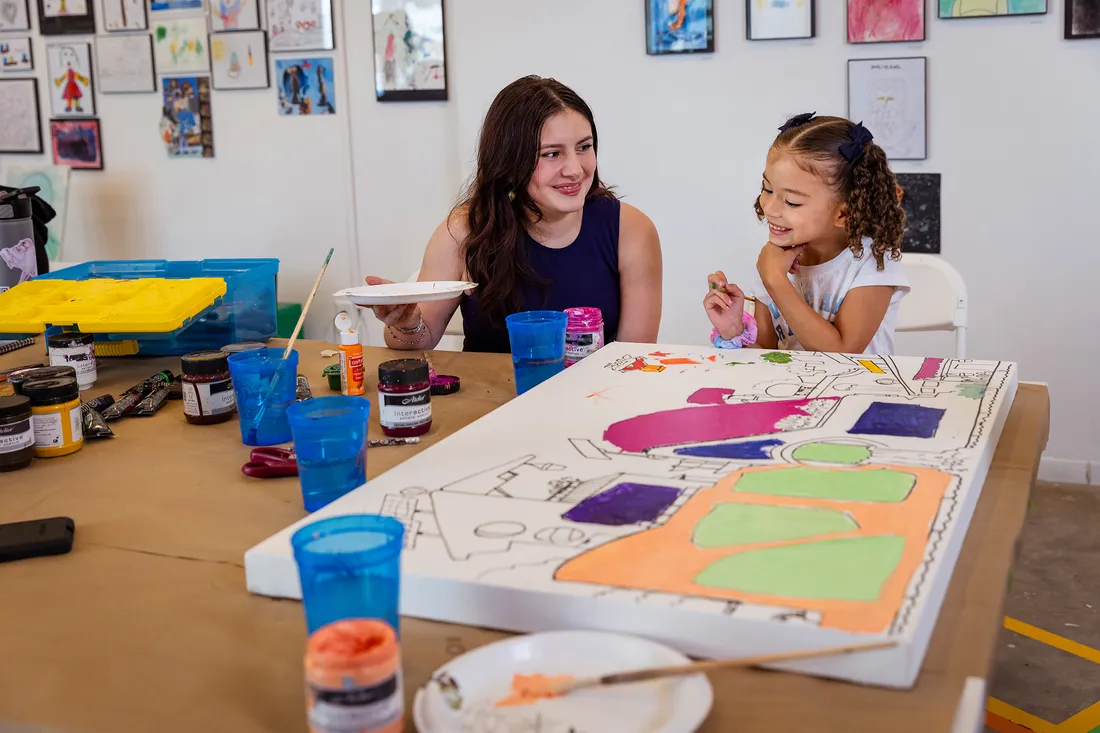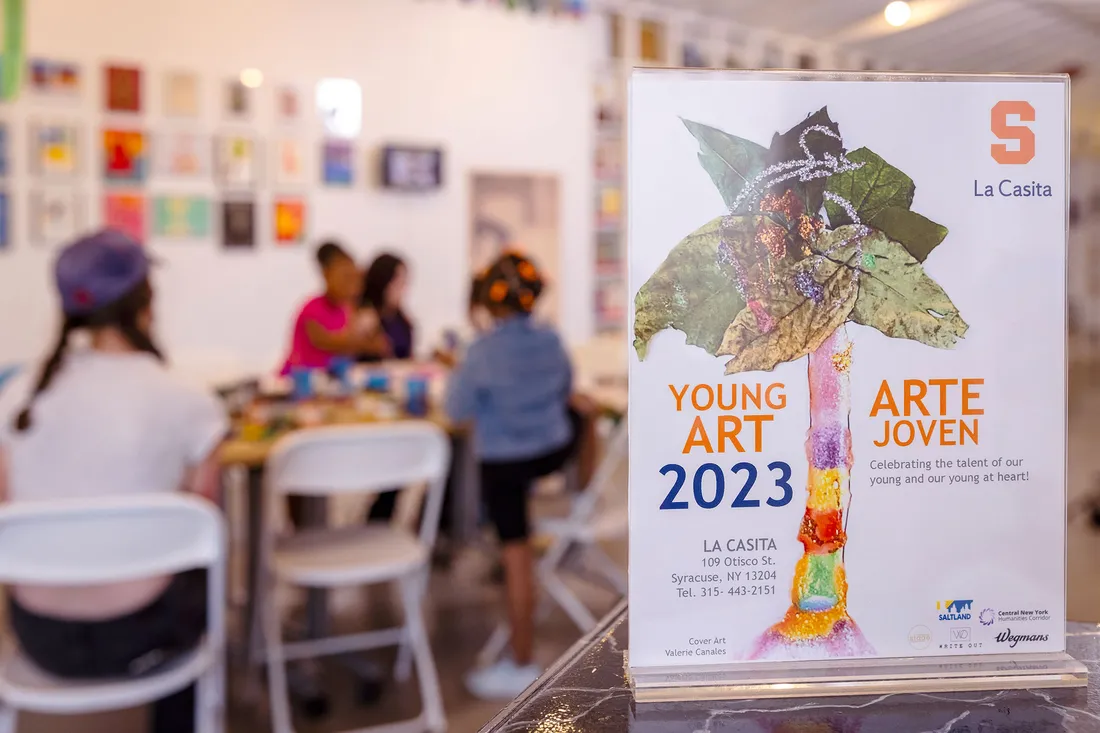The space is softly lit but bright with vibrant art on every wall. Latin music blends with conversation, laughter and the playful shouts of children. Some people are dancing, others fill their plates at the buffet and gather in rooms full of instruments, craft supplies and bilingual books about Latin American people and culture. The crowd is mostly Syracuse University students and local families, and the atmosphere is joyful, warm and welcoming.
This was a celebratory night—opening an art exhibit and marking the beginning of Latine Heritage Month—but it’s not an uncommon scene at Syracuse University’s La Casita Cultural Center.
Located in the Near West Side neighborhood of Syracuse, La Casita is dedicated to educational and cultural programming and community engaged research working with Latine communities of Central New York. La Casita facilitates engagement between Syracuse University and regional communities to develop community-based programming and provide University students and faculty opportunities to apply their scholarship in meaningful and practical service.
An Empowering Place To Learn

“Our familias in Syracuse find their culture, language and heritage represented at La Casita," explains Tere Paniagua, executive director of cultural engagement for the Hispanic community.
“La Casita connects Latine communities at the University and in the region,” explains Tere Paniagua, executive director of cultural engagement for the Hispanic community. “Our familias in Syracuse find their culture, language and heritage represented here, and Syracuse University students find a space where they feel belonging, can be part of a larger community, and do work that relates directly to their field of study. Students gain invaluable experience, and their work has a positive public impact in our city and our region.”
Programming at La Casita offers opportunities for students in every school and college. “There is not one school or college in the University where we don’t have some kind of collaboration and internship program so that students can receive academic credit or other support for their work at La Casita,” says Paniagua.
Political science major Sidney Mejía ’24 was inspired to become involved at La Casita by a course on environmental racism that she took during her study abroad semester in London. She knew she wanted to do something to help empower young people address environmental degradation. “Everyone I spoke with at La Casita was so supportive and helped me figure out how to develop the kind of program I had in mind,” Mejía says.
Over the summer, Mejía worked with local children to create a community garden at La Casita, and she provided science education based around their experiences with the plants and the garden. Mejía coordinated with another Maxwell School of Citizenship and Public Affairs student, Evelina Torres ’25, who offered a program called “Planetary Guardians,” educating young students about environmental issues and activism.

Sidney Mejía ’24 taught a science program and worked with local children to create a community garden to help empower young people to address environmental degradation.
Mejía particularly appreciated sharing her interests in science with the children who attended their programs. She expanded on this by helping with another project, “STEM from Dance,”* where students learned coding and video animation and produced a dance performance. “It was all girls of color who signed up for that program, and it was a great way for them to become interested in STEM,” Mejía explains. “The program participants went from feeling unsure at first, to realizing that they can learn it and do it. Their enthusiasm was so inspiring. And we had conversations about women in STEM fields—and now they can see themselves in those positions.”

Film professor Kelly Gallagher co-taught a program where students learned coding and video animation and produced a dance performance.
A Distinctive Combination of Research and Programming
La Casita’s dual focus on cultural programming and research is a differentiating feature that makes it distinct from other Latine and Hispanic Centers, Paniagua says. It’s a combination that has attracted the attention of other major institutions and generated nationally recognized work.
For example, when centuries-old artifacts from various regions in Latin America were discovered without documentation in archives in the area, La Casita helped organize a series of focus groups inviting people from the region to share family knowledge and memories about the significance of the pieces. These testimonials are helping curators identify and contextualize the artifacts.**
Projects at La Casita have resulted in considerable collections of memorabilia related to the Latin American experience in Central New York—and the Smithsonian National Museum of American History has taken note. La Casita is now a partner in a nationwide collection and research initiative led by the Smithsonian, focused on the history of Latin Americans and baseball.
A Grounding Connection with Community

Valeria Martínez Gutiérrez ’26 is one of the nearly 300 Syracuse University students, annually, who do community-centered research or internships at La Casita Cultural Center.
The sense of community and the connection to culture that Syracuse students find at La Casita can be transformative. Valeria Martínez Gutiérrez ’26, who moved from a small town in Texas to attend Syracuse, says that La Casita helped find her footing at the University and secured her sense of belonging. “It changed so much for me,” she says. Martínez Gutiérrez, who triple majors in sociology, earth sciences, and environment, sustainability and policy, says that at La Casita she has met friends and other student leaders with whom she feels a shared sense of purpose. “La Casita helps us remember why we’re doing what we’re doing, and helps us make our education even more valuable,” she says. “We want to take full advantage of the amazing resources and opportunities of this great University, help our communities, and share our culture. And when you put yourself in positions where you are involved in things, and doing something to help, doors open. La Casita has definitely done that for me.”
*“Stem From Dance” was co-taught by Kelly Gallagher, associate professor of film in the College of Visual and Performing Arts, and a local dance instructor, Marisa Guzmán.
**This project is spearhead by museum studies faculty fellow, Alix Ferrer-Yulfo.


